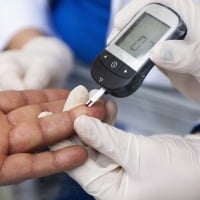Type 1 diabetes is an autoimmune disease that develops when the body is unable to produce insulin. The body’s defense system that usually protects against infections attacks and destroys the insulin-produding cells in the pancreas. In Type 1 diabetes, particular molecules in the pancreas cause the immune system to react. Normally, these autoantigens would be ignored, however, those with Type 1 diabetes have antibodies in their blood that are specific to each of the molecules. Tests are being employed to detect these antibodies – the more detected the higher the chance is that someone will develop Type 1 diabetes. This is helpful in identifying those who are at risk of developing Type 1 diabetes, and could also sometime in the future provide the chance to halt the disease in it’s tracks, before it fully develops.
Dr Michael Christie from the University of Lincoln, UK led the research team that made the ground-breaking discovery, with funding by Diabetes UK and the Society for Endocrinology. Previously, scientists had located four molecules that are attacked by the immune system in those with Type 1 diabetes. The fifth molecule, known only as ‘Glima’ for the past 20 years, had not been identified. Christie and his team were able to identify this molecule as Tetraspanin-7. This will enable tests for predicting Type 1 diabetes to have a higher degree of accuracy. They have now moved on to attempting to locate ways to block the immune attack, in order to prevent Type 1 diabetes from developing in those who are at high risk of developing it.
Dr. Christie said “”We already had some knowledge about the physical properties of ‘Glima’ but its molecular identity has for many years proved elusive. This has hampered the development of relevant autoantibody tests, but our research successfully identified ‘Glima’ as the substance Tetraspanin-7. We can now exploit this knowledge for diabetes prediction and immunotherapy.”




